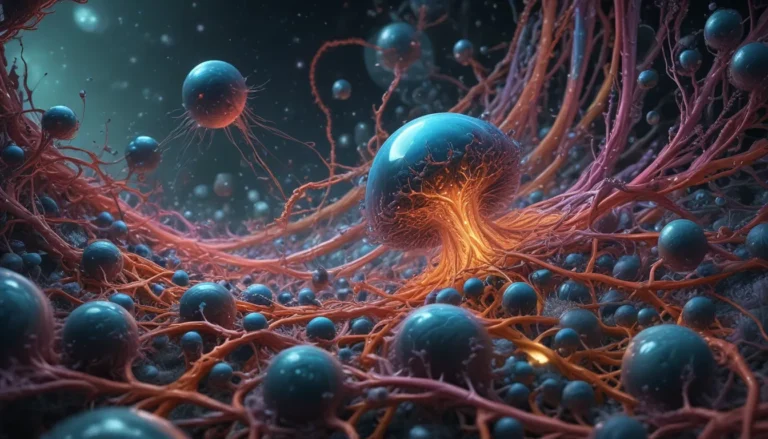A Note About Images: The images used in our articles are for illustration purposes only and may not exactly match the content. They are meant to engage readers, but the text should be relied upon for accurate information.
Coulomb’s Law of Electrostatics, a cornerstone of physics, illuminates the intricate dance of electric charges and the forces they exert on each other. Named after the pioneering French physicist Charles-Augustin de Coulomb, this law unravels the mysteries of static electricity, electric fields, conductors, and insulators. Join us on a journey through the captivating world of Coulomb’s Law as we delve into its historical roots, mathematical formulations, and real-world applications. Let’s unlock the secrets of electrostatic forces and their profound impact on our daily lives.
Key Insights Into Coulomb’s Law
- Coulomb’s Law serves as a secret code, unraveling the invisible forces of electricity that govern our universe.
- Like a superhero in the realm of physics, this law sheds light on everything from atomic structures to subatomic behavior, unlocking the essence of electromagnetism.
The Genesis of Coulomb’s Law
In 1785, Charles-Augustin de Coulomb revolutionized physics with his groundbreaking work, stating that the force between two charged objects is directly related to the product of their charges and inversely proportional to the square of the distance between them.
Discovering the Math Behind Coulomb’s Law
The mathematical essence of Coulomb’s Law is encapsulated in the formula F = k * (q1 * q2) / r^2, where F symbolizes the electrostatic force, q1 and q2 represent the charges of the objects, r denotes the distance between them, and k stands for Coulomb’s constant.
Delving Into Electric Charges
Coulomb’s Law applies to both positive and negative charges, showcasing how like charges repel while opposite charges attract, painting a vivid picture of the dance of electricity.
The Enigma of the Inverse Square Law
One of the mesmerizing facets of Coulomb’s Law lies in its inverse square relationship, where the force between charges diminishes as the square of the distance between them escalates, illuminating the delicate balance of electric forces.
Unraveling Coulomb’s Constant
The enigmatic Coulomb’s constant, denoted by the letter k, weighs in at around 8.9875517923 x 10^9 Nm^2/C, wielding its influence on the strength of electrostatic forces between charged entities.
Coulomb’s Impact on SI Charge
The Coulomb, hailed as the SI unit of electric charge, holds a special place in the annals of physics, paying homage to Charles-Augustin de Coulomb. With one Coulomb equating to the charge of approximately 6.242 × 10^18 electrons, this unit embarks on a journey through the realm of electric forces.
Superposition: Coulomb’s Law in Action
Embracing the superposition principle, Coulomb’s Law illustrates that the total force on a charged object results from the cohesive interplay of forces instigated by individual charges acting upon it.
Understanding Distances in Coulomb’s Law
In the realm of Coulomb’s Law, the distance between charges emerges as a pivotal factor, defining the strength of the electrostatic force. Accurate measurement of this distance is crucial in unraveling the mysteries of electric forces.
Equilibrium Harmony: A Lesson in Coulomb’s Law
Coulomb’s Law sheds light on the realms of electrostatic equilibrium, where the delicate balance of net forces and torques on a system of charges converge to a harmonious zero.
The Nexus Between Coulomb’s Law and Newton’s Third Law
Echoing the sentiments of Newton’s Third Law of Motion, Coulomb’s Law unveils the symbiotic relationship between action and reaction forces in the realm of charged entities.
Electric Fields Unveiled
Coulomb’s Law acts as a beacon, guiding the exploration of electric fields, delineating the influence of charged entities on each other in the absence of physical contact, fostering a deeper understanding of the underlying forces.
Coulomb’s Law in Capacitors
Diving into the realm of capacitors, essential components in electronic circuits, Coulomb’s Law opens the doorway to efficient storage and release of electrical energy, laying the groundwork for technological advancements.
Stability in Charged Systems: An Ode to Coulomb’s Law
Coulomb’s Law unveils the secrets of equilibrium in charged systems, where the intricate interplay of forces ensures stability, underscoring the delicate balance of electric forces.
The Role of Coulomb’s Law in Atomic Structures
At the core of atomic structures lies Coulomb’s Law, orchestrating the electromagnetic forces between electrons and protons that bind atoms together, elucidating the essence of atomic stability.
Unveiling the Shielding Effect
The captivating shielding effect, a phenomenon observed in charged systems, showcases the distribution of charges on conductive surfaces under the compelling influence of Coulomb’s Law, painting a vivid picture of equilibrium.
Coulomb’s Law and the Torsion Balance
Step into the realm of Coulomb’s Torsion Balance, an experimental marvel rooted in Coulomb’s Law, measuring the electrical forces between charged entities with the aid of a sensitive torsion balance.
Exploring Particle Physics Through Coulomb’s Law
Embark on a journey through the realms of particle physics, where Coulomb’s Law acts as a guiding light, unraveling the behavior of subatomic particles and the forces interweaving their existence.
Coulomb’s Law: An Approximation Unveiled
Coulomb’s Law emerges as an approximation, steadfast in its validity for static charges and low velocities. As the realms of moving charges and relativistic effects come into play, the complexity of this law unfolds.
Electromagnetism: A Foundation Laid by Coulomb’s Law
Coulomb’s Law stands tall as a foundational pillar in understanding electromagnetism, paving the way for Maxwell’s Equations and the eventual unification of electricity and magnetism, shaping the course of physics.
Conclusion: The Marvels of Coulomb’s Law
In conclusion, Coulomb’s Law of Electrostatics emerges as a beacon of enlightenment in the realm of physics, offering a profound insight into the intricate dance of electric charges and the forces they wield. Through a journey encompassing 19 captivating facts about Coulomb’s Law, we unveil its pervasive influence across various facets of our lives. From the subtleties of force-distance relationships to the intriguing realm of electric fields, these facts shed light on the profound impact of electric charge on our universe.
By delving into the principles of Coulomb’s Law, we embark on a journey of scientific discovery, unlocking a treasure trove of technological advancements across fields such as electronics, telecommunications, and medicine. This profound knowledge not only forms the foundation of our understanding of electricity and electromagnetism but also paves the way for future innovations and scientific breakthroughs in the realm of physics.
As we embrace the wonders of Coulomb’s Law, we are reminded of the elegant forces that govern the behavior of charged particles, offering a glimpse into the majestic symphony of the natural world. Through continuous exploration and research, we can continue to unravel the mysteries of electricity and unleash the boundless potential for technological innovation in the future.
FAQs: Unraveling the Essentials of Coulomb’s Law
-
What defines Coulomb’s Law of Electrostatics?
Coulomb’s Law of Electrostatics stands as a fundamental pillar in physics, elucidating the attraction or repulsion between charged particles. It postulates that the force between two charged objects is directly proportional to the product of their charges and inversely proportional to the square of the distance between them. -
How can the formula for Coulomb’s Law be expressed?
Expressed as F = k * (q1 * q2) / r^2, where F symbolizes the electrostatic force between charges, q1 and q2 denote the magnitudes of the charges, r represents the distance between them, and k stands for the electrostatic constant. -
What units of measurement are utilized in Coulomb’s Law?
The variables in Coulomb’s Law are measured in various units: force (F) is quantified in Newtons (N), charges (q1 and q2) are expressed in Coulombs (C), distance (r) is delineated in meters (m), and the electrostatic constant (k) is measured in Newton-meter squared per Coulomb squared (N·m^2/C^2). -
Does Coulomb’s Law exclusively apply to point charges?
Coulomb’s Law finds applicability not only to point charges, defined as infinitesimally small entities with discrete charges, but also extends its reach to the behavior of charged objects that are not point charges, provided the distance between them substantially exceeds their dimensions. -
In what way does Coulomb’s Law relate to electric fields?
Coulomb’s Law shares a profound relationship with electric fields, unfolding a direct connection where the electric field generated by a charged entity at a specific point mirrors the force exerted on a positive test charge located at that spot, divided by the magnitude of the test charge. This interplay offers insights into the intricate world of electric fields, guided by the principles of Coulomb’s Law.
Your Feedback Matters
We prioritize the delivery of authentic and engaging content that resonates with our readers’ quest for knowledge and enlightenment. Each fact shared on our platform is a product of collective contributions, ensuring a tapestry of diverse insights and information. Our dedicated editorial team upholds the highest standards of accuracy and reliability, meticulously reviewing every submission. Trust in our commitment to excellence and authenticity as you embark on a journey of exploration and learning with us.
Through the lens of Coulomb’s Law, we unravel the tapestry of electric forces that shape our universe, offering a gateway to understanding the profound mysteries of charged particles and their intricate dance in the fabric of space. Join us on this enlightening voyage as we explore the wonders of electrostatics and unveil the marvels of Coulomb’s Law.






